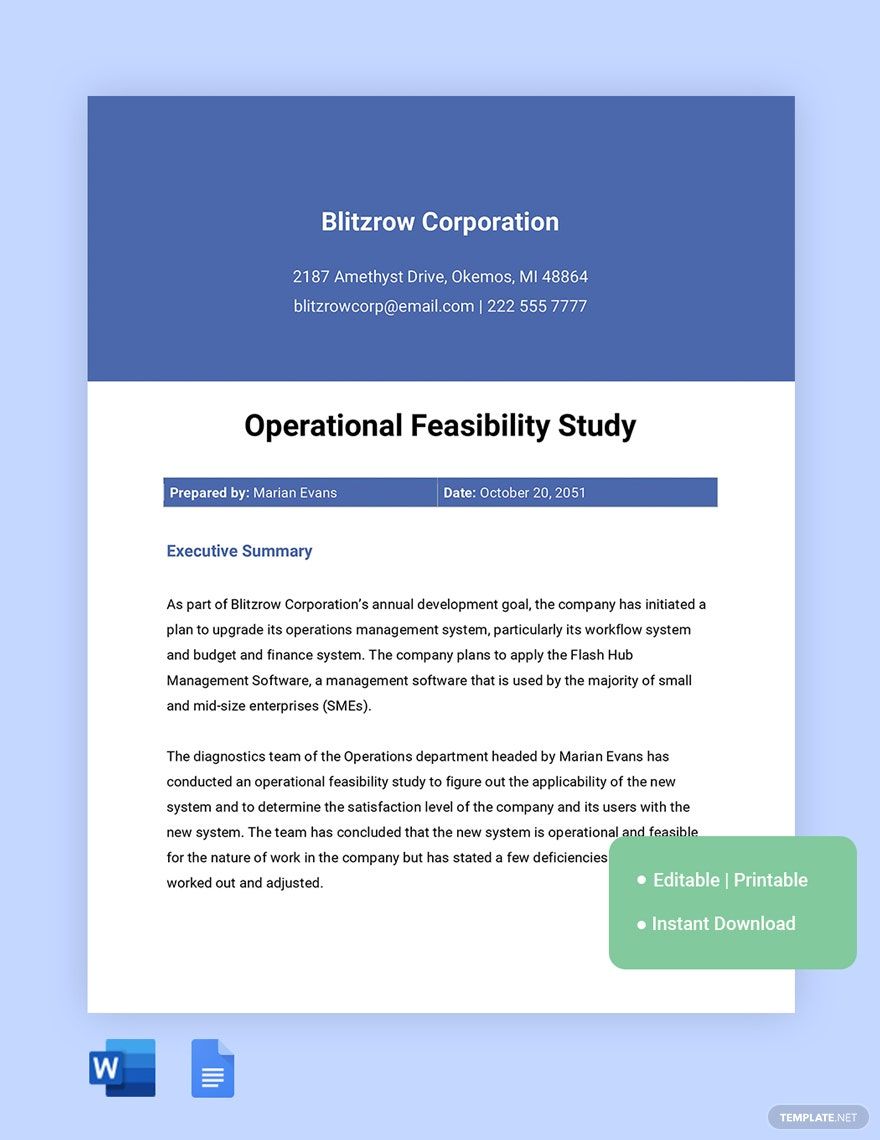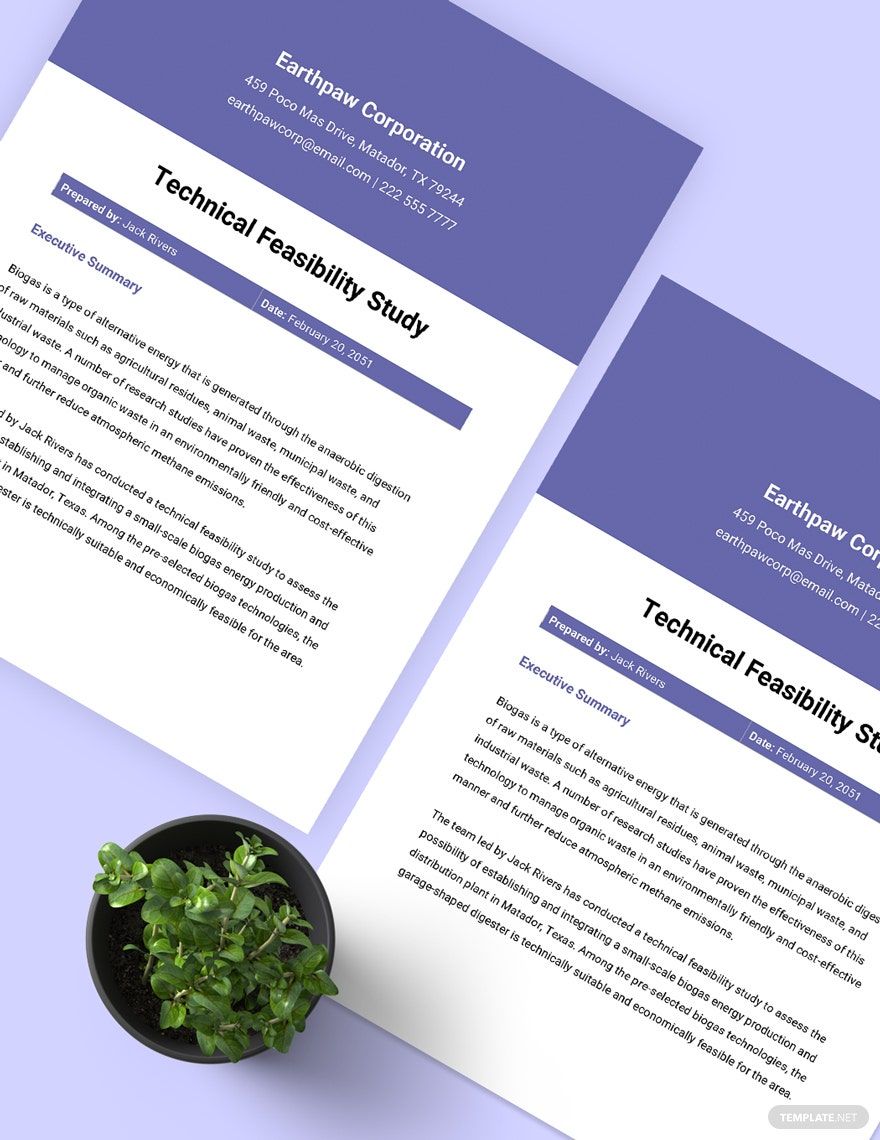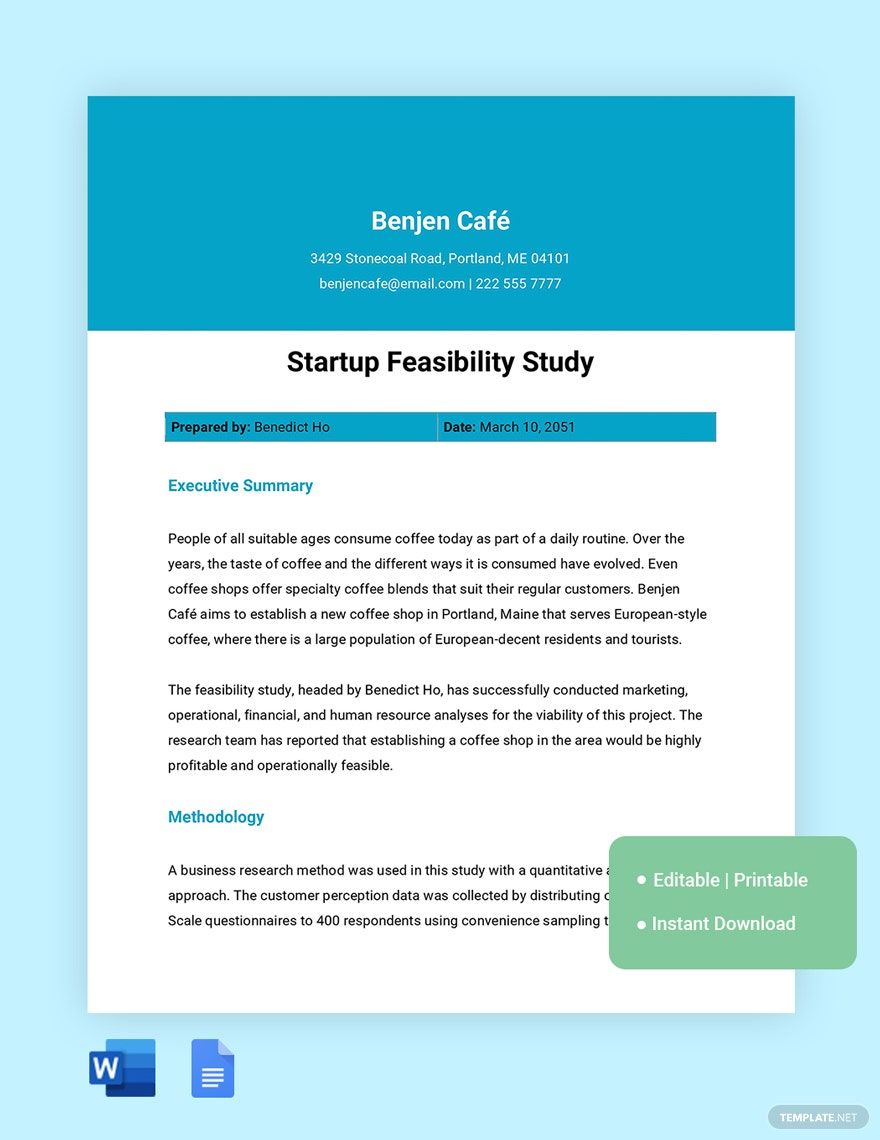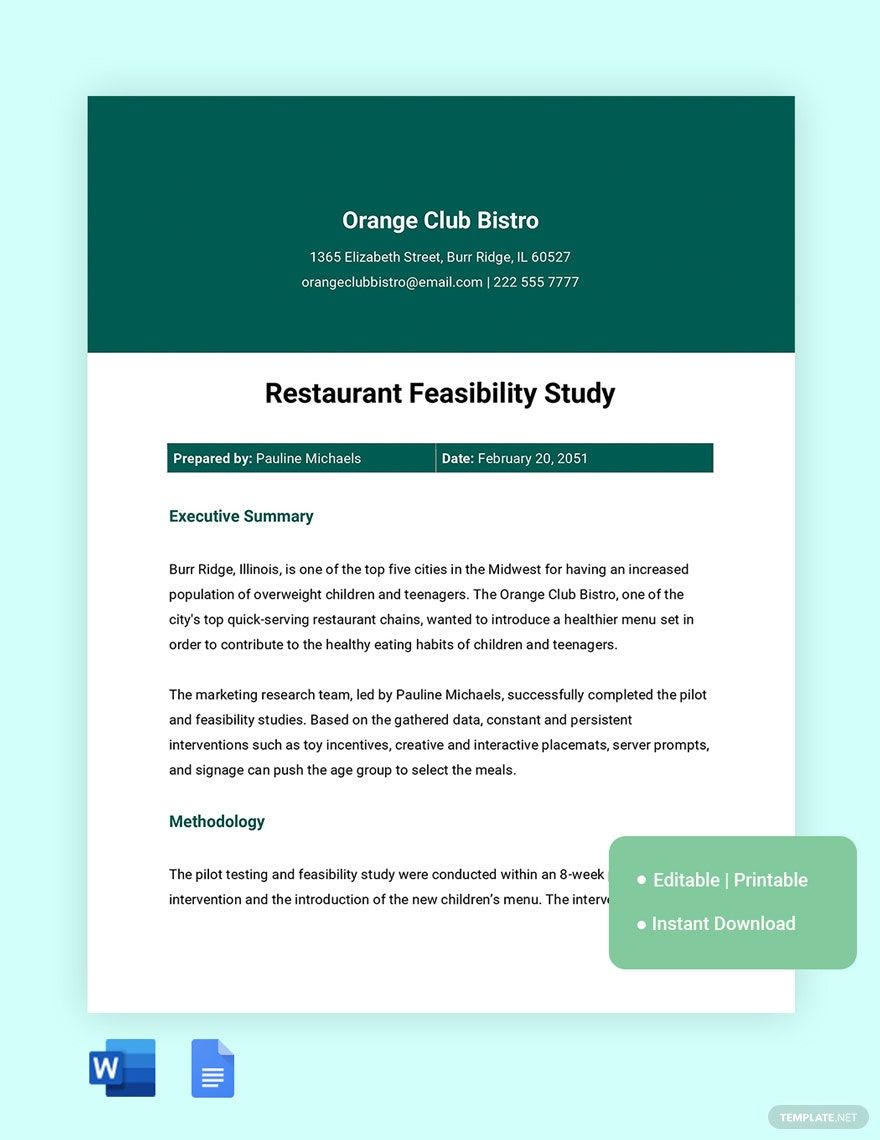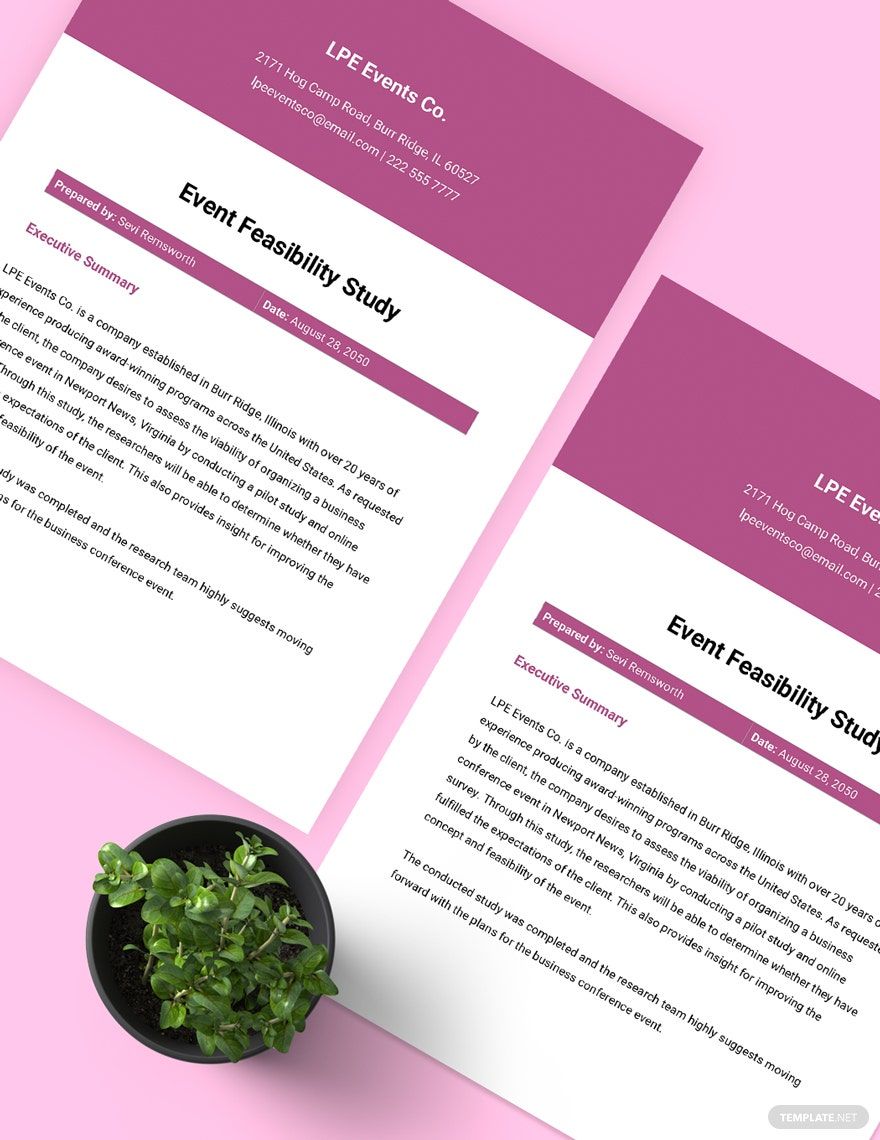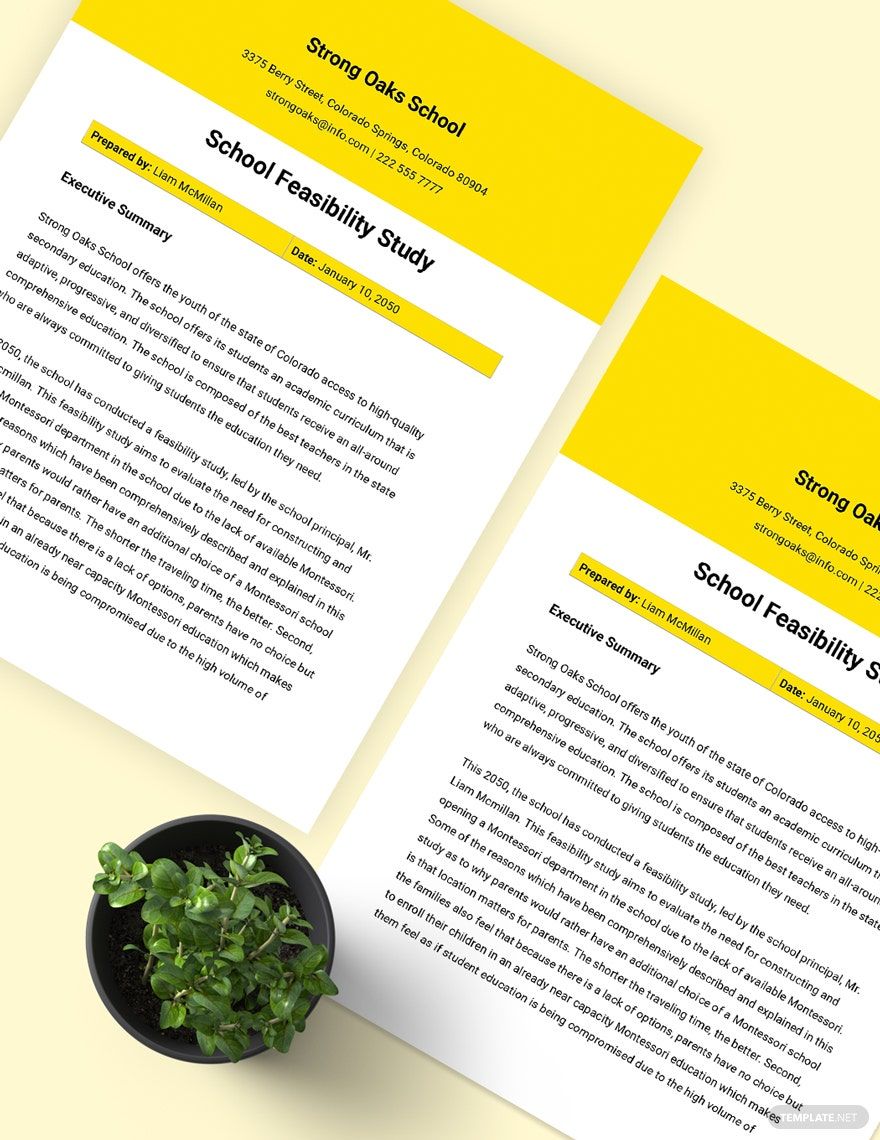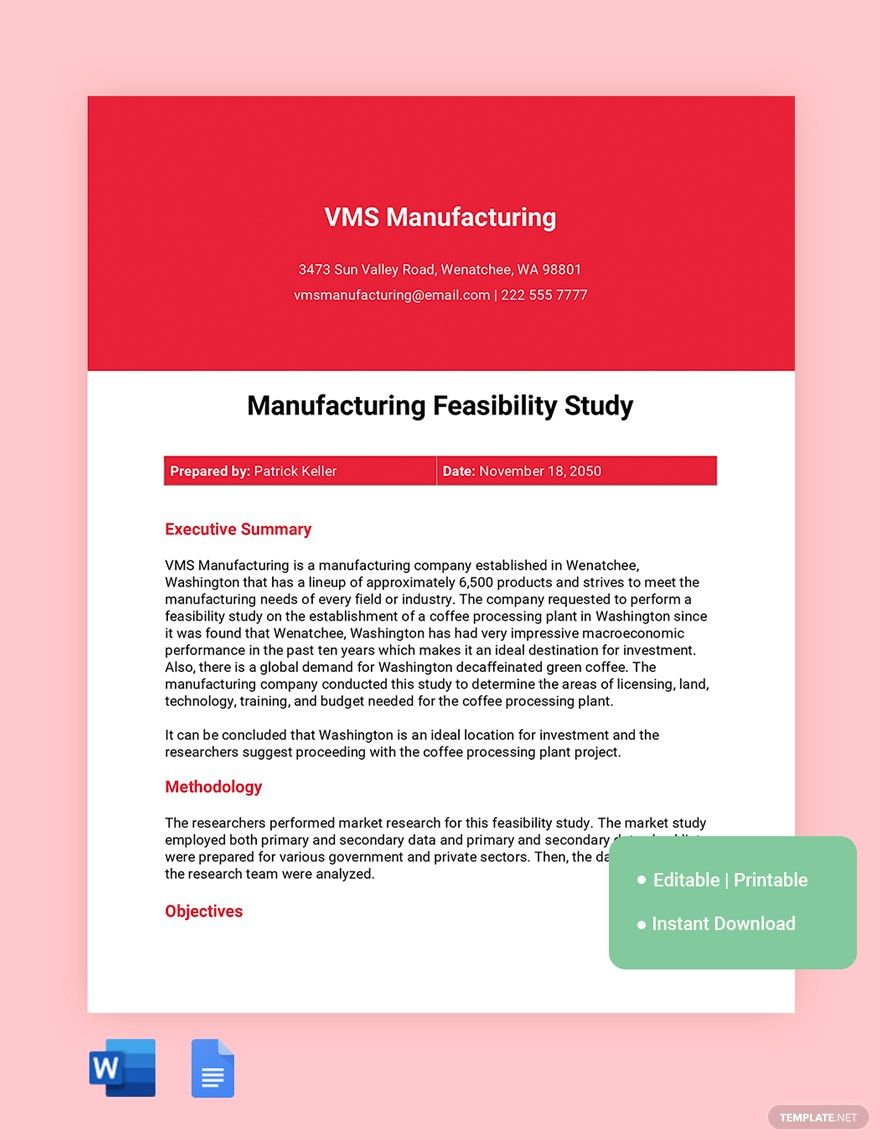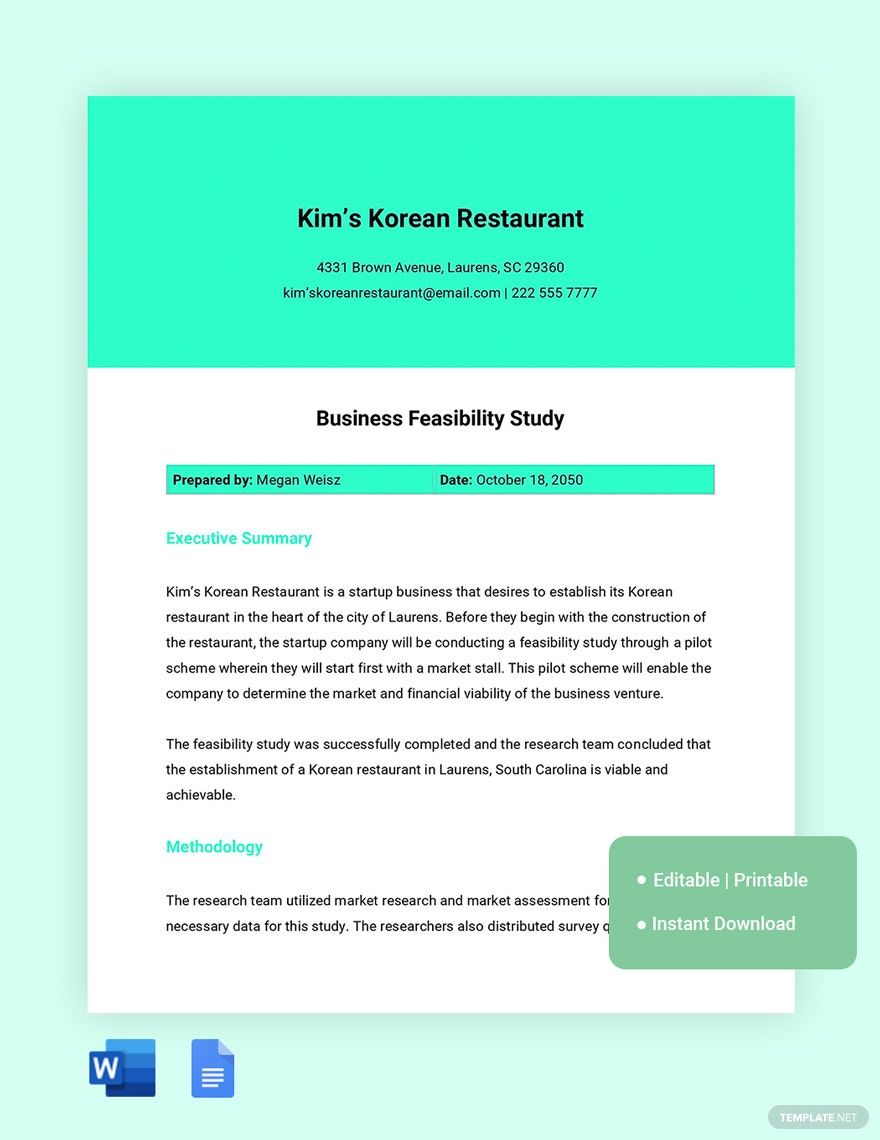Table of Contents
- Feasibility Study Definition & Meaning
- What Is a Feasibility Study?
- 10 Types of Feasibility Study
- Feasibility Study Uses, Purpose, Importance
- What’s in a Feasibility Study? Parts?
- How to Design a Feasibility Study
- Feasibility Study vs. Research
- What’s the Difference Between Feasibility Study, Business Plan, and Project Proposal?
- Feasibility Study Sizes
- Feasibility Study Ideas & Examples
- FAQs
Feasibility Study
A feasibility study functions as a traffic light for any business idea that may pop into one’s mind: it may either signal “go” or “stop” depending on the outcome of the study. It is the perfect tool to see whether a project is more likely to succeed than not, as well as to identify its strengths and weaknesses.
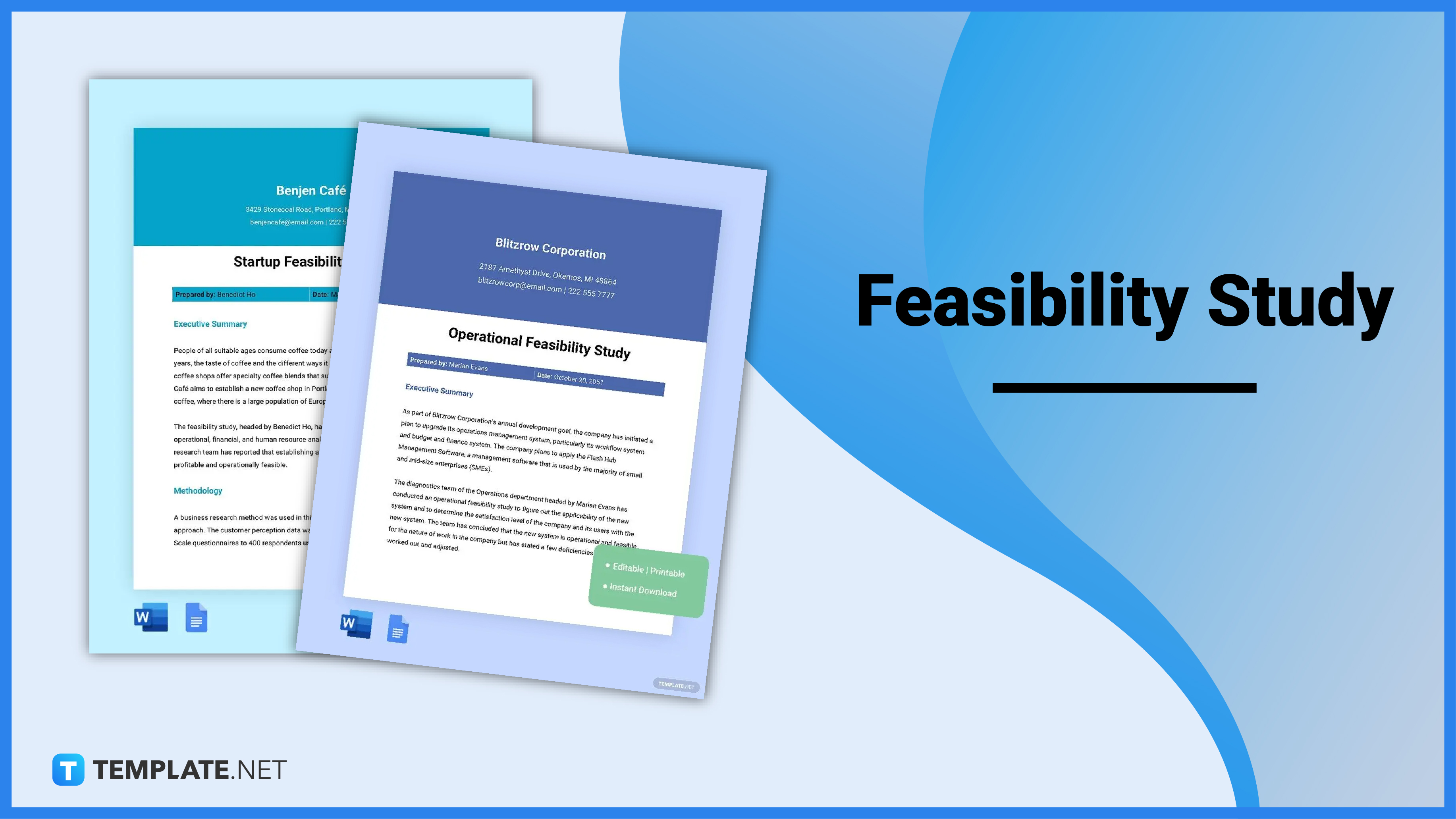
Download this Feasibility Study File in PDF!
File Format:
Feasibility Study Definition & Meaning
A feasibility study is an assessment of the practicality of a proposed plan or method.
This means that a feasibility study serves to investigate the sustainability of a project or business idea.
What Is a Feasibility Study?
A feasibility study examines or analyzes the attainability of a certain project or business. It checks the variables that are included or associated with the business idea. An idea may proceed to materialize based on the result provided by this study.
10 Types of Feasibility Study
Operational Feasibility Study
According to Pavadee Katimuneetorn, an operational feasibility study allows a gain of understanding of whether a proposed system or idea will likely solve a business problem or whether a business should take advantage of opportunities or not. Here, the importance of understanding how a system will fit into the day-to-day operations of an organization or business is emphasized. Moreover, work practices and procedures that support a system are assessed in an operational feasibility study.
Technical Feasibility Study
A technical feasibility study provides applicable context to various aspects of a project. It is a great tool for planning because it offers an overview of how the project can develop during a period of time. Furthermore, it troubleshoots and tracks the progress of the project from conception to realization.
Startup Feasibility Study
A startup feasibility study focuses on the development and validation of a business concept. This answers key questions related to the business model, customer validation, and source of financial funding. Startup Feasibility Study also provides answers to questions regarding the competitive positioning of a proposed business and its financial projections.
Retail Feasibility Study
A retail feasibility study, based on CCIM Institute’s Retail Analysis, determines if a proposed or existing use at a certain location will meet the objectives of the developer or investor. This study includes the analyses of market and competition, location or site, political and legal components, and financial components. A retail feasibility study helps in identifying the achievability of a project.
Restaurant Feasibility Study
A restaurant feasibility study is a crossbreed market research approach since it combines qualitative and quantitative elements. The data gathered in this study will predict the success of the establishment based on factors such as the frequency of the target market in the restaurant and the customer satisfaction levels among many others. This study will also serve as a determining factor for an investor whether they should continue to invest in the restaurant or not.
Event Feasibility Study
An event feasibility study is essentially about knowing the likeliness of an event to transpire successfully. This study highlights the importance of determining factors such as cash flow, resources, and timelines. Assessing these, and many other factors secures a high success rate of any event.
School Feasibility Study
A school feasibility study is critical in starting this particular establishment. This describes the potential, strengths and weaknesses, and impact of the school in a particular location or area. A school feasibility study may also include the facilities and opportunities an educational institution offers.
Manufacturing Feasibility Study
A manufacturing feasibility study, as per LinkedIn’s definition, is an analysis and evaluation of a proposed project to determine if it is feasible to manufacture a specific product and assure customer satisfaction. This includes the data on the funding needs, the risk factors, and other common factors such as the strengths and weaknesses of the project and market opportunity. Conducting a manufacturing feasibility study ensures investors that what they’re putting their money on is attainable and sustainable.
Real Estate Feasibility Study
A real estate feasibility study is a primary stage of a land purchasing process that analyzes and determines the practicality of the land it will be used for. All aspects of the property, from financial and environmental perspectives, are reviewed in this stage. This study also includes surveying land irrigations, septic placements, and soil conditions in its procedures.
Business Feasibility Study
The business feasibility study is the most common type of feasibility study. This identifies the SWOT or Strengths, Weaknesses, Opportunities, and Threats of the proposed business concept which may or may not contribute to its sustainability. It is critical to conduct a feasibility study, especially for a business, to avoid financial and logistical damages if in case a proposal has been approved.
Feasibility Study Uses, Purpose, Importance
A feasibility study is a crucial stage for any plan, project idea, or business concept. In order to move forward into implementation and realization, this must be conducted primarily. Below are five feats of a feasibility study to help you have a tighter grasp of its importance:
Analyzes viability
Ultimately, the goal of any plan or business proposal is to be realized. A feasibility study allows any idea to be presented and criticized to see if it can be achieved within a reasonable period. It answers the question “should we proceed with the proposed plan?”
Determines Sustainability
Similar to the first feature, a feasibility study somehow visualizes the longevity or sustainability of a project or a business concept before it proceeds to materialization. It creates expectations on the economical and logistical aspects that may be confronted. Without determining the sustainability of a proposal, everything may fail in a short span of time.
Examines SWOT
A feasibility study examines the SWOT or strength, weakness, opportunity, and threat of a particular idea or plan. It helps foresee possible shortcomings or problems that may arise during its implementation and generate solutions to overcome them. Much like anything in the world, a business concept has its limitations that can be given resolution or alternative if recognized systematically.
Saves Time and Money
One of the most recognized feats of a feasibility study is how it can save money and time, for both the investors and the owner of the idea. From the get-go, a project can be determined as pass or fail depending on the outcome of the study. This will avoid unnecessary steps that will more likely involve money even before a project’s implementation.
Improves Overall Idea
A feasibility study, whether rejected or passed (but mostly when rejected), becomes an avenue or opportunity to improve parts and details of the project. Through methodical investigations, some areas of the plan are spotlighted and may require furnishing. This may add extra effort but any criticism, if taken positively, becomes a tool for innovation.
What’s in a Feasibility Study? Parts?
Title Page
The title page is the first part of a feasibility study. The title of the project, which should be direct yet insightful, is seen here along with the names of the project leader and members (if there are any). A schedule or target date for the implementation of the project can also be mentioned here.
Table of Contents
The table of contents provides an outline of the topics within your feasibility study for the convenience of the readers. This will make it easier for them to grasp your project. Make sure to make it organized for cohesiveness.
Executive Summary
In this section, an introduction of the project, its purpose, and solutions is maximized. Basically, this will serve as an overview of the entirety of the plan. The executive summary should also include the sources that support the project’s credibility.
Market Feasibility
This section of the report provides insightful information about the company statistics, outlook, and market research. The first part highlights the summary of the company’s industry. The market feasibility allows readers to understand the project, what it can offer, and how it can grow over time.
Technical Feasibility
The technical feasibility portion is an outline of several operational factors that influence the success of a business concept. Here, the location, materials needed for production, manufacturing process, and quality assurance facilities are discussed. This provides a detailed understanding of the factors that maintain the business’ continued high-quality delivery of products or services.
Financial Feasibility
Essentially, this section gives readers an outline of the project’s finances. This includes information on the investors, the project’s supposed revenue, assets, and liabilities annually. The financial feasibility section’s goal is to convince investors to invest by showing them the cost in order to maintain the proposed business.
Organizational Feasibility
The organizational feasibility section clarifies the legal and ethical practices of the proposed project. The location or site of the project, the HR procedures that will take place, and the methods that would instill productivity and continuity in the workplace could be included here. This portion aims to determine whether the proposed plan’s practices are cohesive with that of the investors.
Conclusion
Finally, the last part of a feasibility study is a conclusion. Here, the summary of each section is presented. Highlighting the key features of the project is important.
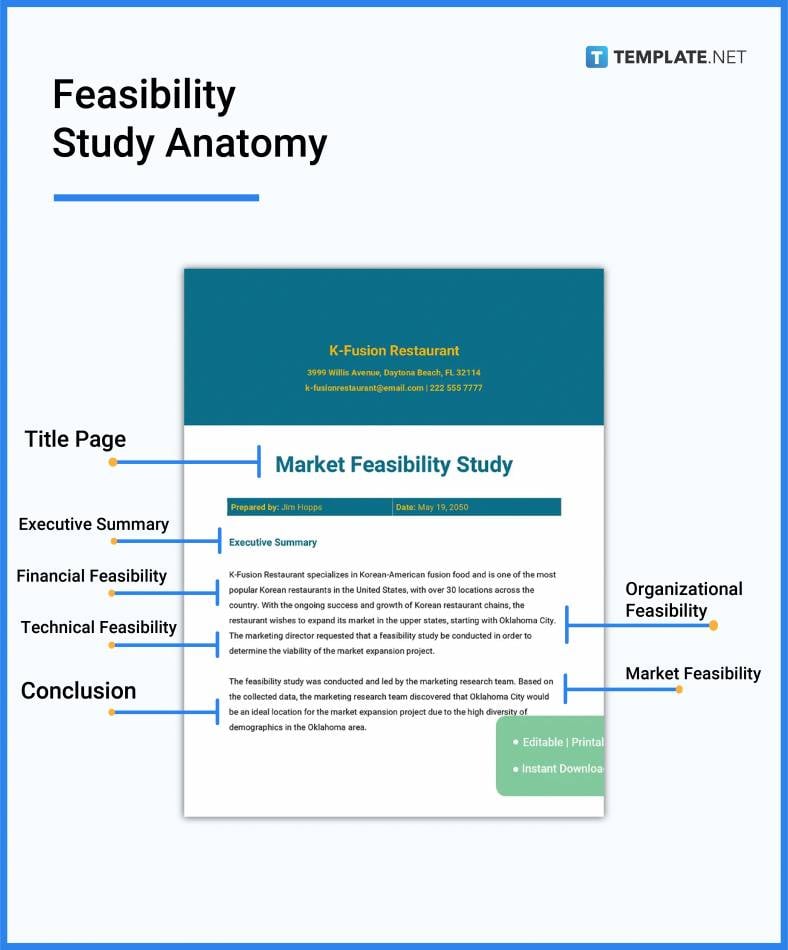
How to Design a Feasibility Study
1. Choose a Feasibility Study Size.
2. Determine the purpose of the Feasibility Study.
3. Select a Feasibility Study Template.
4. Collect all the data you need for the Feasibility Study.
5. Choose the key information that supports and strengthens the Feasibility Study.
6. Organize them into each of the sections or parts of a Feasibility Study.
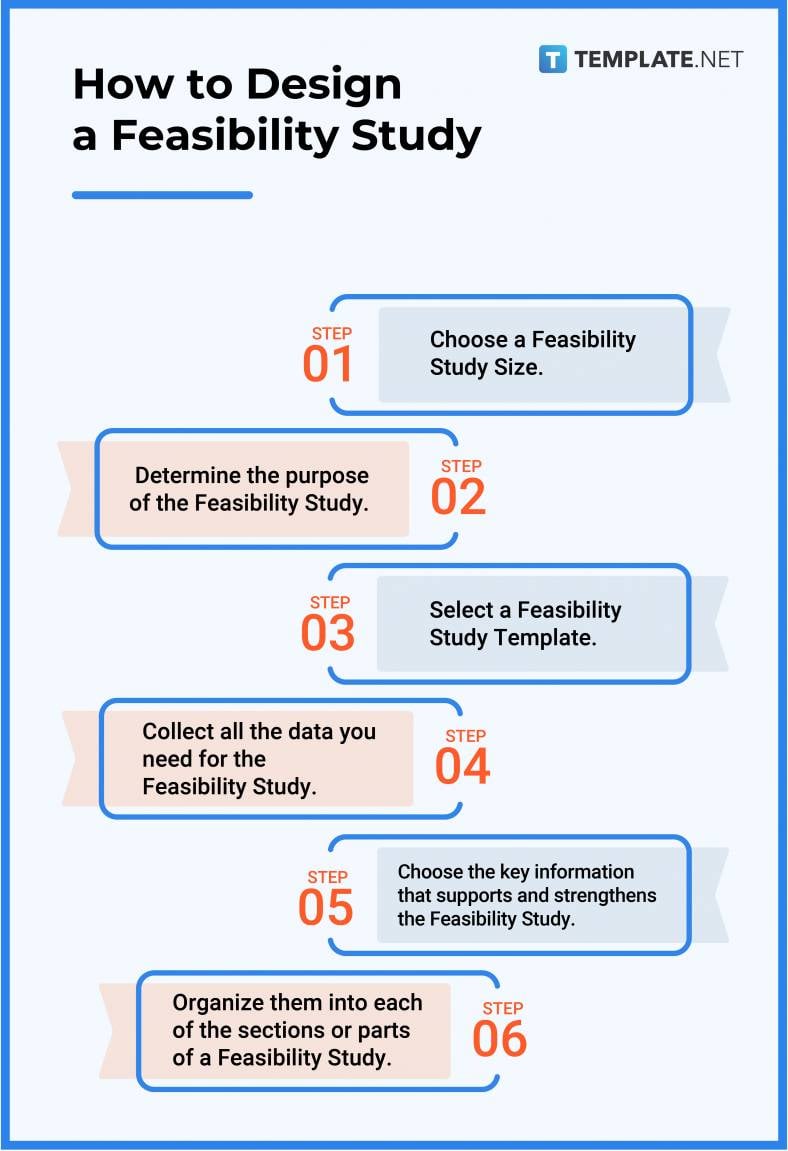
Feasibility Study vs. Research
A feasibility Study aims to investigate the factors that contribute to the entirety of a project or business concept which eventually determines whether it should be approved for implementation or not.
Research, on the other hand, is a more in-depth study on a particular matter and is grounded on empirical methodologies.
What’s the Difference Between Feasibility Study, Business Plan, and Project Proposal?
A feasibility study determines whether a project, plan, or proposal should push through with realization or not.
A business plan is what follows once the feasibility study has been given a go signal.
A project proposal, although similar to the previous subjects, only tackles a surficial level of a particular project compared to a feasibility study and a business plan.
Feasibility Study Sizes
The feasibility study sizes used for making a feasibility study vary depending on the format that a company or an institution imposes. However, formal documents, such as a feasibility study, use the standard sizes such as the US Letter, A4, and US Legal sizes.
- Letter (8.5 × 11 inches)
- A4 (8.3 × 11.7 inches)
- Legal (8.5 × 14 inches)
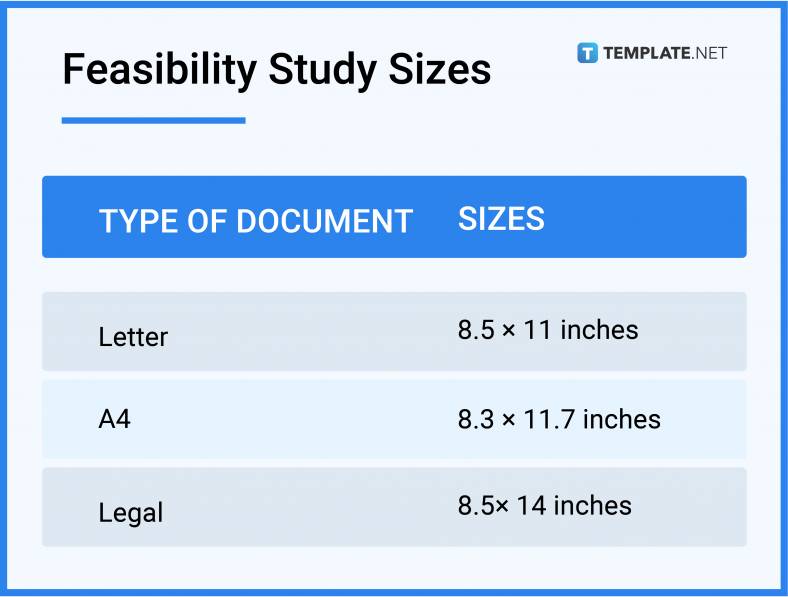
Feasibility Study Ideas & Examples
It’s not easy to create a feasibility study especially if it’s your first time. Even if you’ve written one before, you can save time by checking out feasibility ideas and examples and using them for references.
- Financial Feasibility Study Ideas and Examples
- Project Feasibility Study Ideas and Examples
- Feasibility Study Outline Ideas and Examples
- Product Feasibility Study Ideas and Examples
- Hotel Feasibility Study Ideas and Examples
- One Page Feasibility Study Ideas and Examples
- Market Feasibility Study Ideas and Examples
- Feasibility Study Report Ideas and Examples
- Design Feasibility Study Ideas and Examples
- Company Feasibility Study Ideas and Examples
FAQs
What do you need to conduct a feasibility study?
To conduct a feasibility study, you will need all the data that inform any reader, especially potential investors, of what the project is about, how it will be managed, what organizational and financial systems it follows, and how it can be materialized.
How do you write a feasibility study for a project?
First, you identify what the project would be; second, collect and determine the information that would go into the feasibility study of a particular project; and third, systematically organize those data into sections that would outline the different features of your proposed project.
What is a feasibility study in clinical research?
According to the National Library of Medicine, a feasibility study in clinical trial conduct is a process of evaluating the possibility of conducting a particular clinical trial in a particular geographical region with the objective of project completion in terms of timelines, target, and cost.
What should be included in the feasibility study?
The feasibility study should mainly include the summary of a particular project – its name, industry, proposed location – and sections such as marketing feasibility, organizational feasibility, and conclusion.
What are the 6 components of a feasibility study?
The six components of a feasibility study include the project scope, the current analysis, the requirements, the approach, the evaluation, and the review.
How does a feasibility study work?
It examines all the factors that contribute to the entirety of a proposed plan or project and then it determines whether the said project should proceed to implementation or not.
What is the importance of a feasibility study in business?
Conducting a feasibility study is critical for any type of business because it oversees essential factors, such as financial, technical, and organizational, that back a business and it saves time and money for both the owner and investor since it detects whether the proposed project is a pass or fail.
What are the feasibility study requirements?
A feasibility study requires a preliminary analysis, a projected financial statement, and market research or survey among others.
What is the feasibility study of a website project?
It is an initial stage of measuring the practicality or viability of a website project in terms of how much it is beneficial to a target market in a particular geographic region.
What are the qualities of a good feasibility Study?
A feasibility study is considered good when it offers readers in-depth and adequate information on a business concept, provides a systematic overview, and presents a project as sustainable and achievable.





